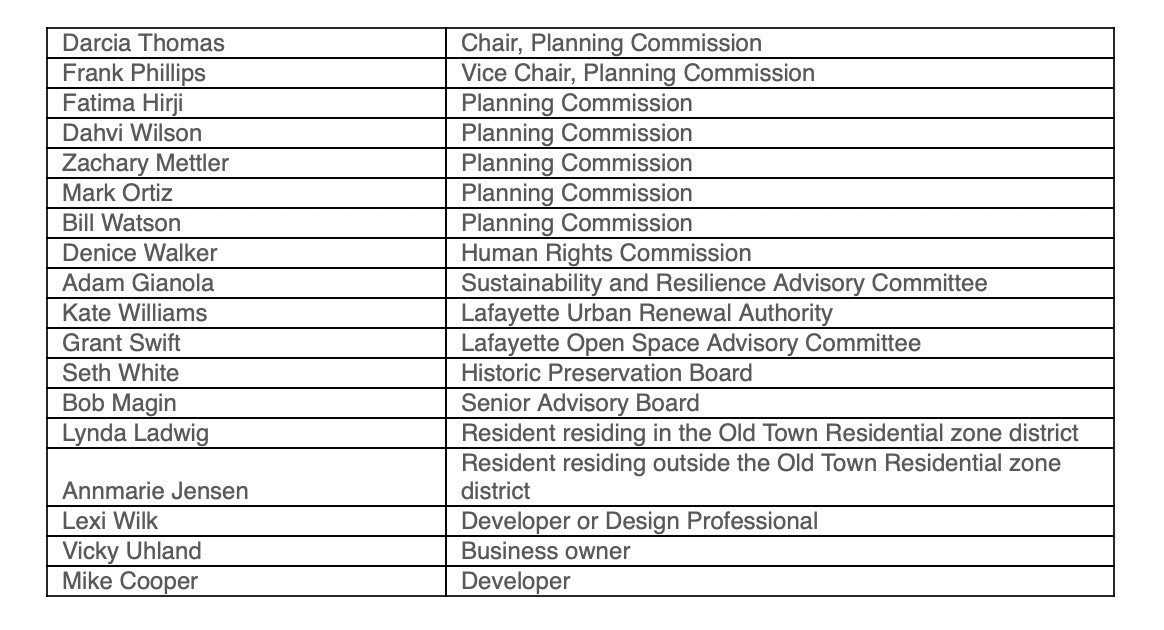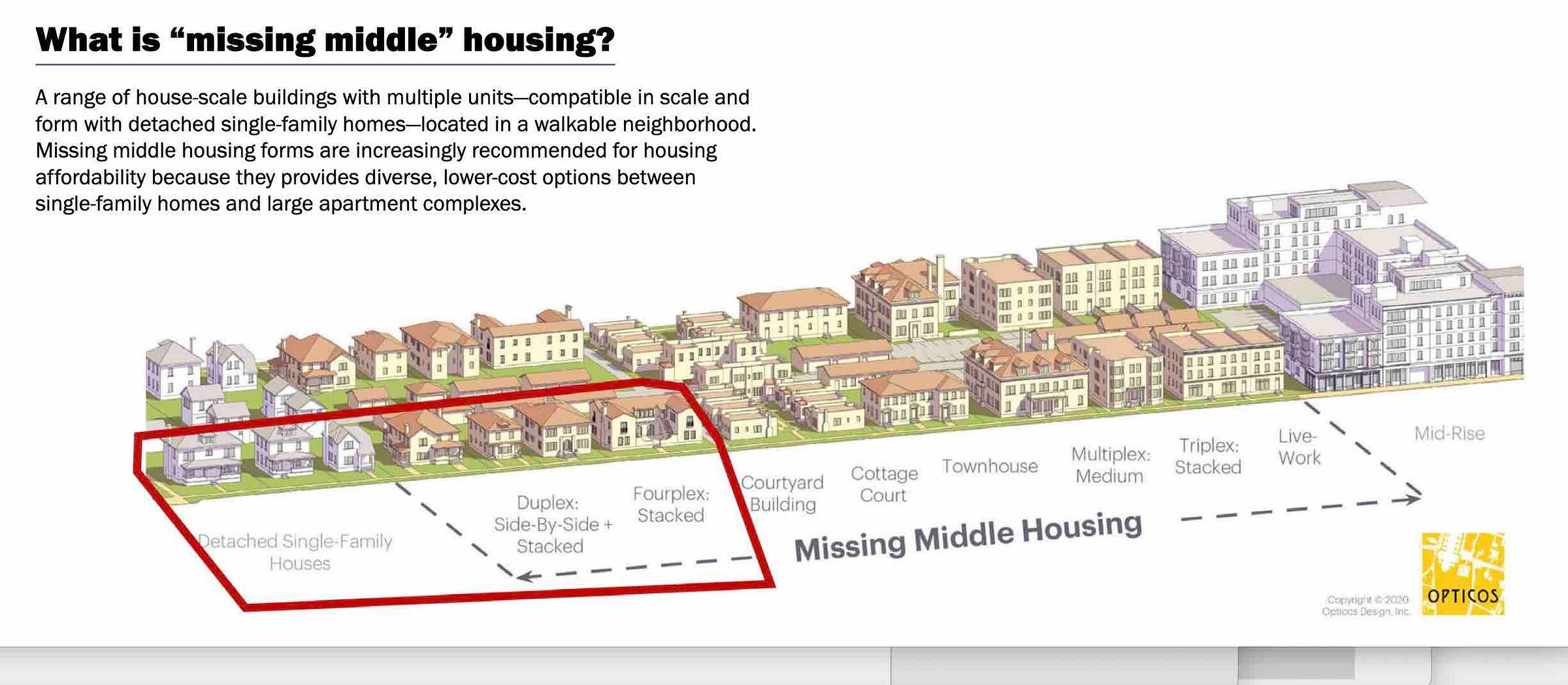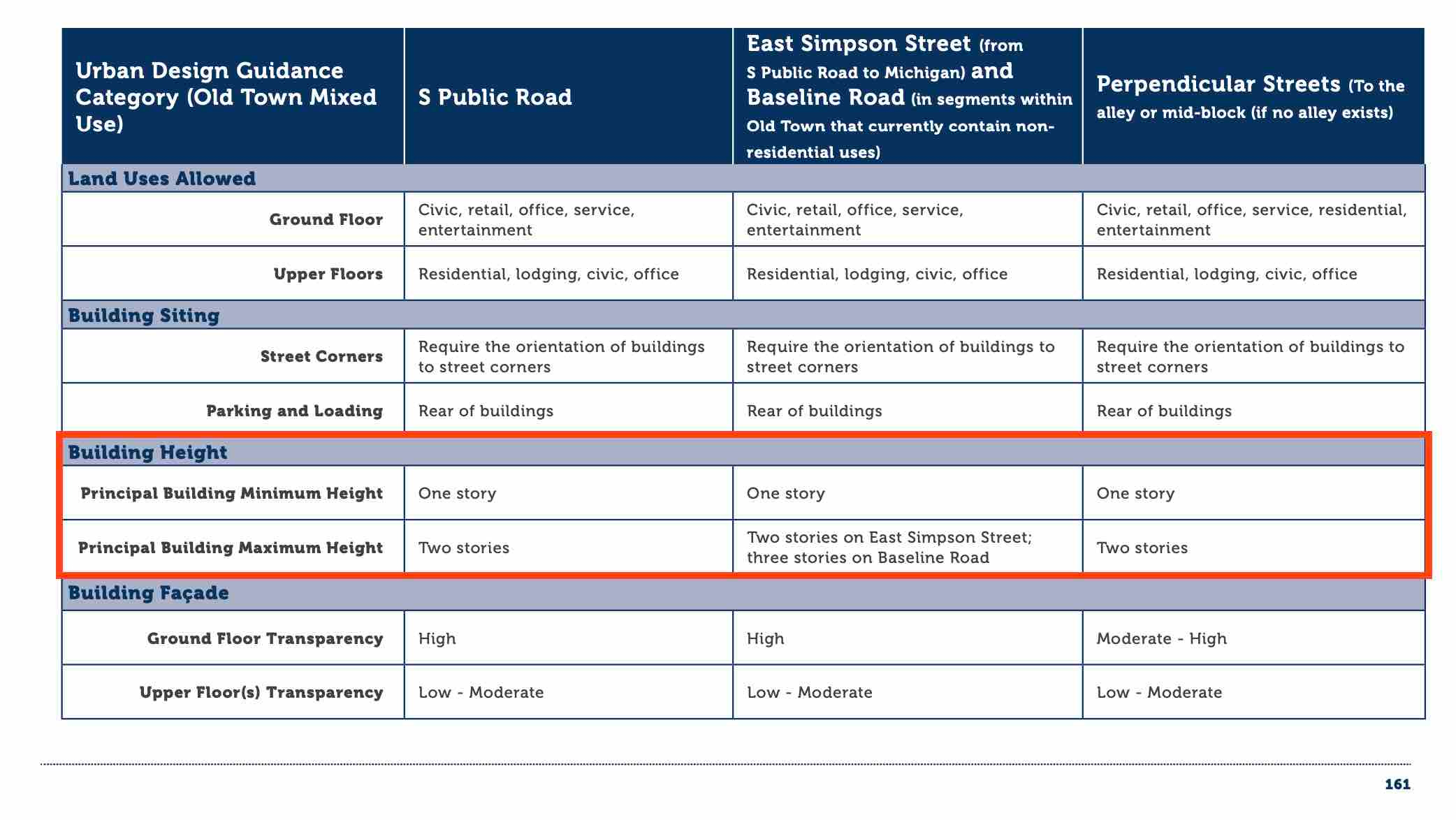Sending up the get involved signal!
It's time to really pay attention

Well, folks, I am feeling like it’s venting time, so hang on.
But first, on my morning walk, I saw a bald eagle fly right over the silos at the eastern end of Old Town. Wow. I love this place, and that’s why I do what I do. And now back to it.
If you’ve been following me for a while, you might recall I began telling you about a captivating topic back in February. The Land Use Code Update! Ta-da, exciting, isn’t it?
Hey now, don’t boo me, this is really something that will affect your life, and the way the city looks going forward.
And I am telling you now, you should pay close attention and get involved. That’s right, this is one of those calls to action from me because future you might end up being really ticked off at current you for not doing anything when the opportunity was right there. And future me might have to ask future you why you are complaining now when you didn’t speak up when you could.
So pull up a chair and I’ll tell you what’s happening and how you can make your voice heard.
THE VISION THING
As I keep saying, the Comprehensive Plan is the closest we get to a vision document created by the community. In 2002, I was appointed by the council to serve on the Citizen Advisory Committee for an update to the Comprehensive Plan. When it was time (past time really) to write a new comp plan, I applied to serve on the Community Advisory Committee and got a spot. (I know, what’s up with me? Could be that eagle flying over the silos) It began in 2019, but somewhere along the way, you might remember, we were all confined to our homes, and everything stopped for about a year.
The process to write the new comp plan was guided by the planning department using paid consultants selected by the city council. We had a change in city administrators as it was beginning, and that was followed by the departure of the planning and building director, the hiring of a new one, and changes in the staffing in that department as well.
The point of the comp plan is to have a written document that sets out what the community wants for the city for the next twenty years. These things cost big bucks, and you don’t want to be constantly writing a new vision thing. And by the way, the community doesn’t really get together and write this document. We didn’t all sit around a campfire, toasting marshmallows, singing songs about love and peace, and imagining our future city, while someone took notes by the light of a full moon with an owl hooting from a nearby tree.

But there were the usual online surveys, community meetings, workshops, and so on. And the text does capture a lot of what I heard from the community then. Here’s a snippet of the blurb I read to council when they voted to approve.
“We see in this plan support for mom and pop businesses and the arts, a desire to keep our small town feel, and to make connections, not only by bike or foot around the community, but personal connections too. Affordable housing is there, as is an emphasis on preserving our mobile home parks and our historic buildings. Old Town now has its own typography. The inclusion of the history of Rose Lueras and the swimming pool, and what our community did to make amends, provides a snapshot of who we are today and a reminder of who we want to be in the future. The words inclusive, eclectic, diverse, creative, and sustainable are prevalent.”
WHAT ABOUT THE NUTS AND BOLTS
So if the comp plan is the vision thing, the land use code is what brings the vision to life. As I’ve said in previous reports, our land use code was written in the 1980s when things were much different, but before we could update it, after waiting way too long, we had to write a new vision document, the comp plan. With the vision in place, we could then use it to craft the code. That’s where we are now.
WHAT IS THIS BORING LAND USE CODE ANYWAY? (snore)
Over on the Lafayette Listens page, we learn what it is.
“A land use code is a set of regulations that govern how land can be used in a city. They are also known as a zoning code. These codes are based on a community vision for the future and are intended to encourage orderly development (typically on private property) and aid in the creation of livable, vibrant communities. A code typically includes regulations like the use, height, and location of buildings, and the location of roads, parks, and other facilities.”
BACKGROUND
I wrote about it back in February: And the Code Word is - part one: background. I’m not going to bore you with it here because I want to get to where we are now.
THE WORKING GROUP
When the update process began in 2023, a working group was assembled to help guide the process and provide input to staff, and a new set of consultants was hired to write the new code. The working group consists of the planning commission, representatives from many of our boards and committees, and some members of the public who applied to join.
Somewhere along the line, for reasons I don’t know, those first consultants were suddenly gone, and a new firm was hired to take over. Once again, everything was slowed down.
But finally, things started moving. Here’s the current membership of the working group.
The working group’s meetings are open to the public and I began attending. The consultants and staff would bring the group some ideas, and they would provide input and say yeah or nay.
A KAREN SIDESTEP
To put things in context for new readers, we are operating with an old code, which is the law, and a new vision document. Until the new code is adopted by council and becomes law, we are floating in a twilight zone of wanting x, y and z of the new comp plan, while being governed by the old code. The code must be obeyed. (Unless you want a variance from the code, and well, that’s another story)
CONCEPTS
Two concepts from staff and the consultants began to take center stage at the working group meetings. One is related to what they call “missing middle housing,” and the other is “neighborhood commercial”.
MISSING MIDDLE
The city describes it this way:
NEIGHBORHOOD COMMERCIAL
The city describes it this way:
“Neighborhood-serving commercial uses are small businesses and services that primarily cater to the daily needs of residents in a specific neighborhood rather than drawing customers from across the city. These businesses are typically low-impact, pedestrian-friendly, and integrated into residential areas to support a more walkable, mixed-use community.”
So what is being proposed is to change the zoning laws to allow for something like a coffee shop or other small retail or service business in the house at the corner of your block. Also, a change to zoning to allow for some missing middle housing to be integrated into existing neighborhoods. You can picture your own block and imagine what would happen if this change were made. Is this something that sounds good, or not? This will affect neighborhoods in a different way than if a development were to be built from scratch with this concept.
PUBLIC INPUT?
Since I tend to keep an eye on what the city is doing with a focus on the public being informed, I’ve been a thorn in the side of the always helpful Phil Kleisler, our long-range planning manager, who is working on this update. I keep asking when the public will be brought into the process. I think that part of all this has been lacking.
FYI: In February, the consultants provided an eight-page “engagement strategy”.
THE SEPTEMBER WORKING GROUP MEETING - AN OPEN HOUSE TRIAL RUN
So let’s get to where we are now.
The last working group meeting had two components.
THE VIDEO
The first one was the unveiling of a nine minute video about land use, planned for public release. OMG dear readers, it was horrible. As it played there was quite a bit of buzz happening in the audience, and not the good kind. I think I fell asleep during it, and I watch planning commission meetings and don’t doze off. (Sorry, commissioners!) Plus the narrator couldn’t pronounce the name of our city. This is the second video from the city where that’s happened. (Imagine if this happened in Louisville). After comments from those forced to watch for nine excruciating minutes (I admit I piped up and called it horrible, or terrible, and I remember saying it was boring and no one would watch it) plans changed on the spot and the video was sent to bad video hell. So long! Luckily the working group kept that thing from being inflicted on you. What will replace it? I don’t know, stay tuned.
THE PRETEND PUBLIC OPEN HOUSE
OK, I splashed some cold water on my face after reliving that event and now I can get to the core of this meeting.
The purpose was to conduct a public open house for the group (and any members of the public also there) to get feedback on the setup, before actually taking it to the public. (Like that video.) (Phil Kleisler’s voice: She’s never going to forget that is she?)
BOARDS A PLENTY
There were a variety of boards on easels set up around the room with various concepts on them. There are three I want to focus on.
Two of the three are, no surprise, missing middle housing, and neighborhood commercial. They had images and you were supposed to write your comments about them on sticky notes. The third was building height, specifically four stories. Yes, we are finally at this point. The board had a map of the city and attendees were supposed to put a sticky dot where they thought four stories would be ok.
WALKING THE PUBLIC DOWN THE GARDEN PATH
After the meeting I emailed Phil with some comments. Here’s what I wrote, and his reply.
Board (not bored) thoughts
Greetings! 😊
I’ve been pondering the boards that were shown at the last land use code meeting and how they would work for the public.
I wrote a sticky note or two but I wanted to make my thoughts more clear to you.
I know you have been deep into the missing middle housing and the neighborhood commercial topics but the public will have no idea about them. Coupled with the board relating to height, there is one yes or no question for the public that should be at the top of each board and would be easily answered by those looking at each board.
The questions are: do you want to have missing middle housing, do you want to have neighborhood commercial and do you want to allow for height increases to 4 stories? These are important questions that will affect the way Lafayette looks in the future and right now those boards appeared to me to have an assumption that these things are going to happen and you want to know what form the community wants them to take.
There needs to be a step back and find out if the interest is even there before going further into the subject, otherwise there’s a bit of a push poll feel to it. The boards already assume this is going to happen and then guide the reader to give input.
Thanks for listening!
Karen
PHIL’S REPLY
Thanks, Karen. This is exactly the type of feedback we were hoping for. We’ll add a way to gauge the overall temperature of a topic so we can see where to focus our efforts and community discussions (see example below). More to come soon.
Phil
OK THAT SEEMS POSITIVE RIGHT?
As I continue to point out when the topic of four stories arises, the comp plan says this about height in three places, mixed-use developments, adaptable commercial areas (that would be like the Tebo/Kensington property), and eclectiflex areas (too complex to describe here)
The comp plan says this about the Old Town area
WHAT THE CITY IS SAYING ABOUT THE COMP PLAN
“The Legacy Lafayette Comprehensive Plan calls for exploring taller buildings in certain areas - if they provide community benefits beyond what the Land Use Code requires, such as public amenities (e.g., plazas, public art, recreational amenities or other community spaces), sustainability features, or affordable housing.”
What the? I can assure you that there was never any discussion about trading a four-story building for something like a plaza, public art or recreational amenities. Affordable housing was the tradeoff. To be blunt here, this is an incorrect representation of this language. And by the way, why should we trade height for sustainability features? Shouldn’t they be required already?
THE LATEST, I AM FUMING.
I am so ticked off about this city email I received yesterday. Check this out.
EDITED AT 2:35: Since I published this piece, I have now received three more city emails with the same info. One is from planning and building, one is from the sustainability department and one from the economic development department. All with the same “new rules” subject line. I am beyond fuming now.
EDITED TO ADD: At 3:09 on the day I published this report, I emailed Phil to express my disappointment with the phrasing. At 4:54, he replied and told me “the post was updated to say ‘look at the draft plan.’”
THE EMAIL’S SUBJECT SAYS A LOOK AT THE NEW RULES.
Are you freaking kidding me? What new rules? This is supposed to be the start of public engagement to ask us if we are even interested in what is being proposed. Now we are being told there are new rules? (Hello garden path)
October 14, 2025
Join the City on Oct. 16 for Land Use Code Bingo and a look at the new rules
The City has released the first draft of the new Land Use Code and wants your feedback.
If you’ve ever played SimCity, Settlers of Catan, or Minecraft, this is your chance to bring that same spirit to real life and come chat about the building blocks of Lafayette! Join us at Liquid Mechanics Brewing Company for a fun twist on community engagement - Land Use Code Bingo! Meet fellow community members, win prizes, and learn about Lafayette’s draft land use code.
RSVP here!
Consolidated Land Use Code Draft Released
The City is sharing the initial draft of the Land Use Code for community input. This draft includes preliminary regulations for new zoning districts, general development standards, and review procedures.
Several sections are still being developed and will be released as they become available, including:
Affordable housing requirements and incentives
Wildlife standards
Form-based code standards for Old Town (commercial) and larger commercial projects
The draft is available for review and comment on Konveio, an interactive web platform where users can view, search, and share feedback. View the draft here.
TIME TO GET INVOLVED, THIS IS THE BIG STUFF
Back to where I began. If you care about your neighborhood or what’s happening on the other side of town, now is the time to really pay attention and participate.
The questions I asked Phil should be front and center in everything the city brings to you, the residents, as the public outreach part of the process begins.
Those are: Do you want to have missing middle housing, do you want to have neighborhood commercial and do you want to allow for height increases to 4 stories?
Sign up on the Lafayette Listens page to be notified of updates. Right now, only seven people are signed up, and until I mentioned it to Phil at the last meeting, the sign-up option wasn’t even working, even though he was sending out updates.
Check on that page for ways you can participate, and put them on your calendar. There’s a virtual open house on that site that’s been there for months and has two comments. The public needs to get engaged in this, and the time for that is beginning; see that Bingo event above.
And of course I’ll be watching.
Want to offer more support? Awesome!







It’s very upsetting to me that our leadership has this mindset that we are all on board with turning Lafayette into a big city with a big city feel, look and attitude. Seems like I’ve been fighting this forever. I want leaders who will do that fighting for me, but whoever ends up in that position seems to get sucked into the vortex. The comp plan is the comp plan. It’s our vision of the outcome. I want my city council to know it chapter and verse and carry it around like it’s their freaking bible. I want it to be the cornerstone of every decision they make. My impressions is that they either don’t know much about it, or it doesn’t align with their own views so they just don’t care. This election is super important to get new leadership willing to stand up for the community we want, and to be honest, I’m not seeing much of what I would like my leadership to look like. I’m still listening and deciding. I’m doing all I can, but I’m just so frustrated with the lack of engagement and the absence of a coherent community working to guide it. All people want to do is complain when things don’t go their way. No one wants to do the work it takes to keep us on the right path in the face of the vultures that want to feast on the benefits of this wonderful city, aka lining their pockets and moving on the next opportunity. I’m fighting ballot measures and oil and gas projects and shady developments and campaigns and now I have to fight a land use code. I’m getting tired over here. I sure would like to see more people getting involved. I know people are busy and just trying to survive these days. I get it. I just love my city and I see it slipping away, and I wish that more people would help save her. We face a real turning point here. We need help. All people have to do is show up and speak out. It’s past time. Thanks Karen. If it wasn’t for the hard work you do, I honestly don’t think I could keep up. I’m really grateful for you and all the folks like Vicky and Seth and Ron and the others who work hard and never give up. You guys are all my inspiration.
Thanks for this, Karen. I know at least six members of the land use code working group (including me) are not on board with the city not offering a "none of the above" option for the proposed code changes regarding missing middle housing, neighborhood commercial and increased building heights. I know at least three of us have written planning staff or made comments about this during the dry-run open house at the September land use code meeting. I will be at the bingo event on Thursday to see how staff incorporates our comments into public outreach.
It feels to me that these three major code changes are being guided by the consultant, city planning staff and some members of the land use code working group who are either planners or involved with building. I feel like they're envisioning a planning-utopia Lafayette where everyone can walk to the coffee shop or dry cleaners on their block. Where there are duplexes or triplexes on many residential corners. Where residential building heights hit four stories in exchange for a sculpture at the entrance to the development or an apartment-complex swimming pool that isn't open to the general public.
But do Lafayette residents really want this? If the public engagement process is biased toward what the consultants/planning staff envision for our city, how will city council (which ultimately will vote on the new land use code) know what the public really wants? This fear has literally woken me up in the middle of the night, and more than once.
Don't get me wrong—I'm in favor of some neighborhood commercial and judicious use of duplexes or even triplexes. One of the biggest reasons I live in Old Town is because of my close proximity to retail and restaurants. There are duplexes on my block and throughout OT. But people who live in Indian Peaks or Blue Heron or other Lafayette neighborhoods may not want that same atmosphere.
And here's the kicker—according to what planning staff told the working group, existing HOAs would not be required by law to adopt these new residential land use code provisions. Meaning only new developments with new HOAs or existing residential areas without HOAs would be subjected to these missing middle housing, residential commercial and four-story building height code changes. In Old Town, for instance, houses on street corners could be turned into coffee shops or retail establishments under these proposed code changes. And these establishments could be as big as 2,000 square feet. The consultant referred to these buildings as "small" during a city council presentation earlier this year, but they would actually be larger than many OT houses.
Not only do these proposed land use changes bring up equity issues—the neighborhoods that tend to cost more would not be affected by this high-density zoning if their HOAs don't want it—but they're unneeded in most of the areas of town that don't have HOAs. Many of these residents are already within walking distance of retail on Baseline, Public Road or South Boulder Road and live in neighborhoods that aren't only single-family homes. So what is the point of these code changes? If they're for new developments only (which could make sense), then why doesn't the draft code say that? (Spoiler alert: It doesn't.)
Like Karen, I have pushed at every land use code working group meeting for a robust public engagement process. I will reserve judgement until the public input actually starts, but right now, I'm not feeling great about how it's kicking off.